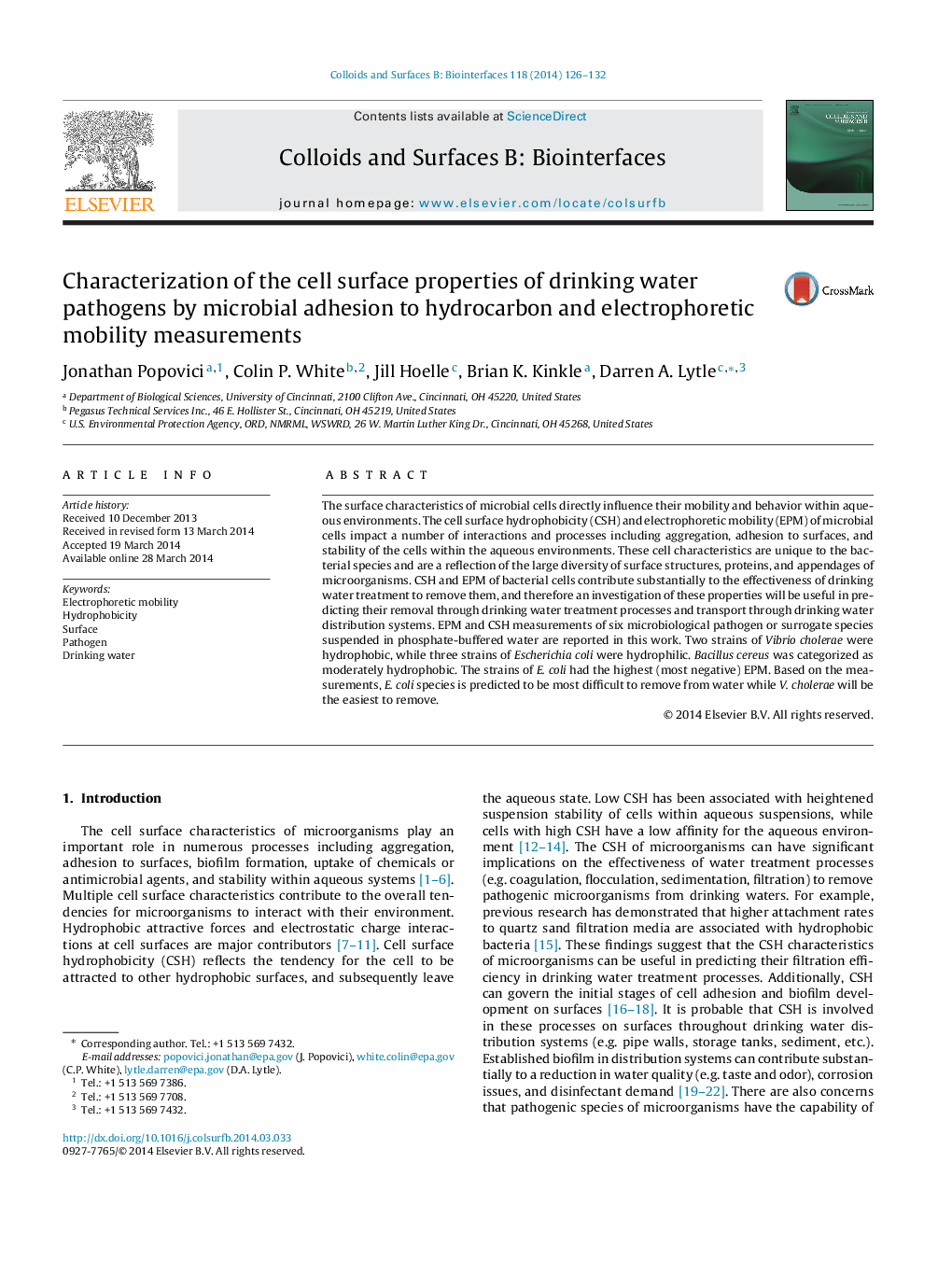| کد مقاله | کد نشریه | سال انتشار | مقاله انگلیسی | نسخه تمام متن |
|---|---|---|---|---|
| 599677 | 1454286 | 2014 | 7 صفحه PDF | دانلود رایگان |
• Organisms tested have an overall negative electrophoretic mobility at pH 8 regardless of buffer strength.
• High degree of variability in surface properties among Gram negative organisms tested.
• Strains of E. coli are predicted to be the most difficult to remove using conventional treatment technologies.
The surface characteristics of microbial cells directly influence their mobility and behavior within aqueous environments. The cell surface hydrophobicity (CSH) and electrophoretic mobility (EPM) of microbial cells impact a number of interactions and processes including aggregation, adhesion to surfaces, and stability of the cells within the aqueous environments. These cell characteristics are unique to the bacterial species and are a reflection of the large diversity of surface structures, proteins, and appendages of microorganisms. CSH and EPM of bacterial cells contribute substantially to the effectiveness of drinking water treatment to remove them, and therefore an investigation of these properties will be useful in predicting their removal through drinking water treatment processes and transport through drinking water distribution systems. EPM and CSH measurements of six microbiological pathogen or surrogate species suspended in phosphate-buffered water are reported in this work. Two strains of Vibrio cholerae were hydrophobic, while three strains of Escherichia coli were hydrophilic. Bacillus cereus was categorized as moderately hydrophobic. The strains of E. coli had the highest (most negative) EPM. Based on the measurements, E. coli species is predicted to be most difficult to remove from water while V. cholerae will be the easiest to remove.
Figure optionsDownload as PowerPoint slide
Journal: Colloids and Surfaces B: Biointerfaces - Volume 118, 1 June 2014, Pages 126–132
